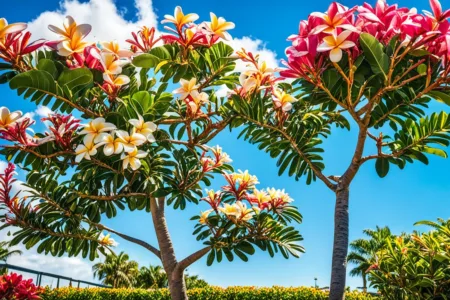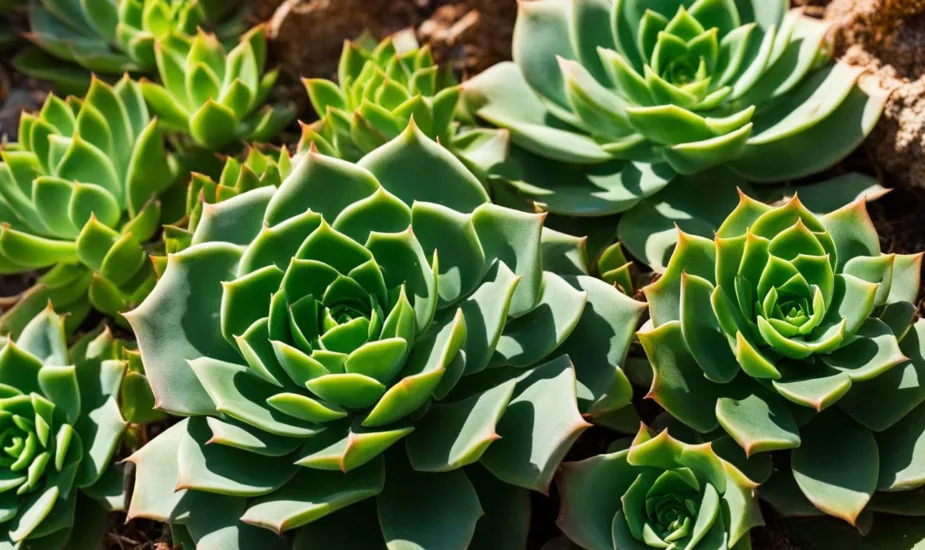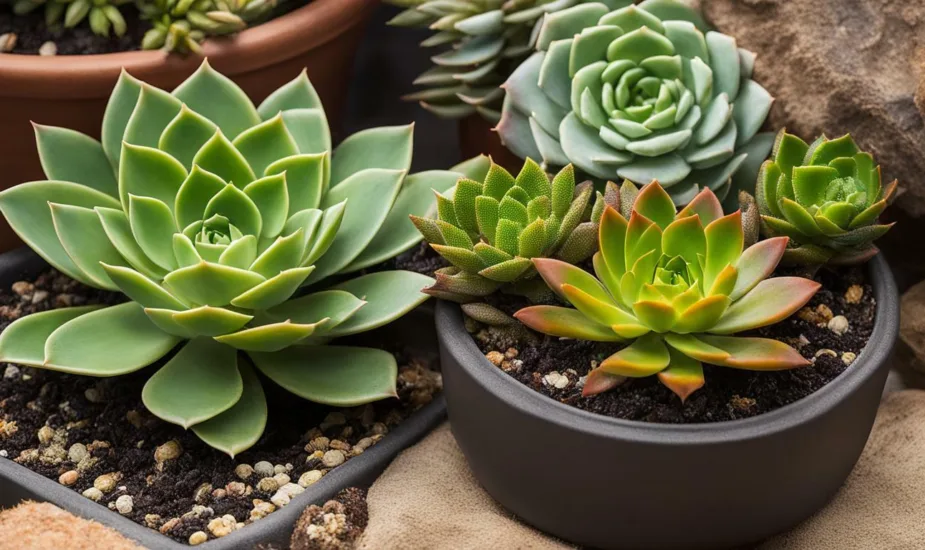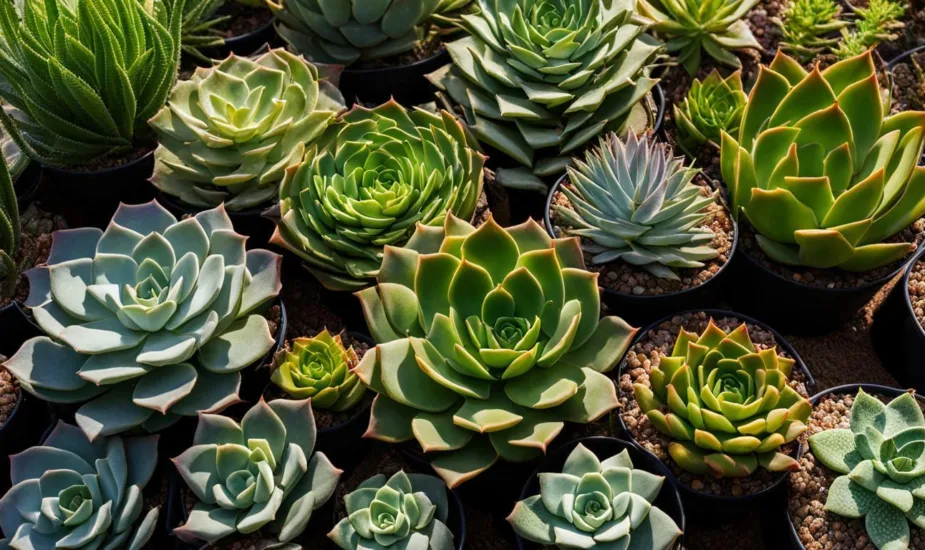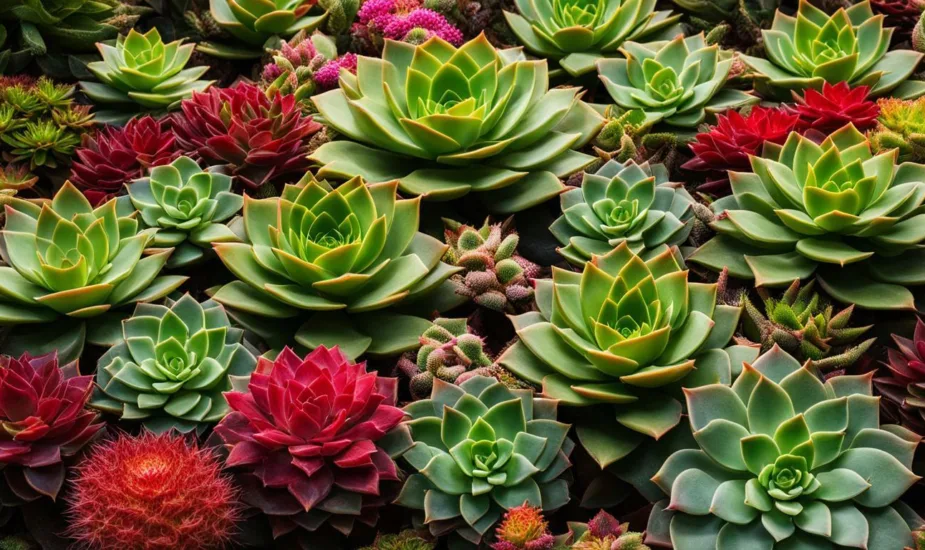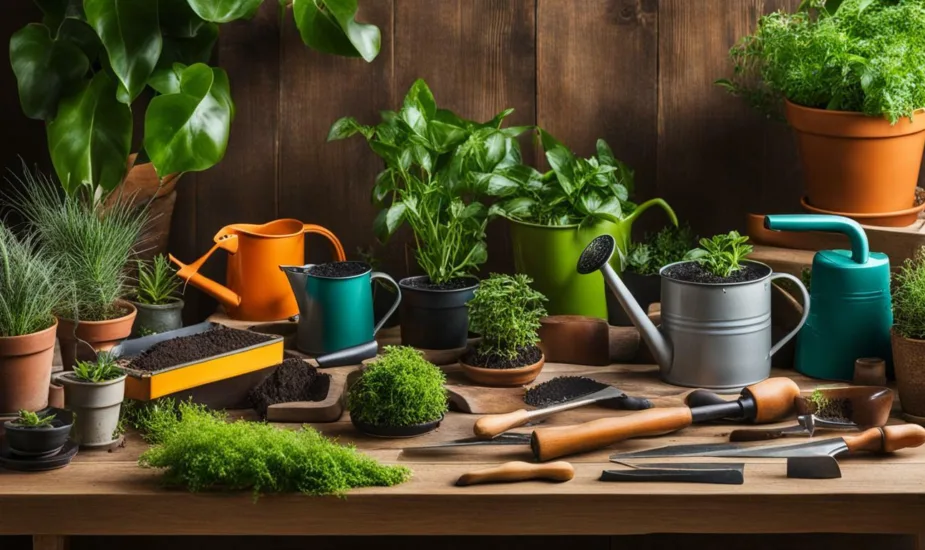Narcissus Tazetta Daffodil: The Fragrant Harbinger of Spring

Imagine walking out onto your small apartment balcony, a warm cup of coffee in hand, to find a mini oasis of lush greenery and vibrant fruits. This is the beauty of container fruit gardening, a perfect solution for urban dwellers like me who crave the taste of homegrown fruit but have limited outdoor space.
When I first embarked on my journey into container fruit gardening, I had no idea where to begin. I was a complete novice, with little gardening experience and a desire to bring a touch of nature into my urban environment. That’s when I stumbled upon the world of potted fruit trees, the perfect option for those who want to enjoy fresh fruit without the need for a sprawling garden.
Through trial and error, as well as hours of research, I discovered the secrets to successful container fruit gardening. Now, I want to share my fresh picks guide with you, my fellow urban dwellers and beginner gardeners. In this guide, I’ll walk you through everything you need to know to start your own container fruit garden, from selecting the right varieties to essential gardening techniques and maintenance tips.
Get ready to transform your small space into a thriving oasis of fresh, homegrown fruit. Your taste buds will thank you!
Key Takeaways:
- Container fruit gardening is a great option for urban dwellers and beginners with limited outdoor space.
- Potted fruit trees provide delicious fruit and add beauty to any space.
- Choosing the right fruit tree varieties is crucial for container gardening success.
- Essential urban gardening techniques like soil mix selection and proper drainage are important for fruit tree health.
- Maintenance tips like watering, pruning, and overwintering are essential for container fruit gardening.
The Appeal of Container Fruit Gardening
Container fruit gardening is a popular choice for both experienced gardeners and beginners alike, offering numerous advantages. Potted fruit trees not only provide delicious fruit but also add beauty and greenery to any space. Whether you have limited outdoor areas such as balconies or patios or simply want to optimize your gardening space, container fruit gardening is the perfect solution. By utilizing pots, you can enjoy the benefits of space-saving gardening while still reaping the rewards of a bountiful fruit harvest.
Why Choose Potted Fruit Trees?
Potted fruit trees are a versatile option for any garden, providing an array of benefits. Here are a few reasons why you might consider choosing potted fruit trees for your container fruit garden:
- Flexibility: Potted fruit trees can be moved around, allowing you to optimize sunlight and shade for optimal growth and fruit production.
- Aesthetics: The beauty and greenery of fruit trees add visual appeal to any space, adding a touch of nature to balconies, patios, or even indoor environments.
- Convenience: With potted fruit trees, you have easy access to your favorite fruits right outside your doorstep, eliminating the need for travel to a local grocery store.
Benefits of Space-Saving Gardening
One of the key advantages of container fruit gardening is the ability to save space. With the challenges of limited outdoor areas in urban environments, container gardening allows you to make the most of your available space. By utilizing pots, you can enjoy the benefits of gardening in a compact and efficient manner. Whether you have a small balcony, rooftop, or even a windowsill, container fruit gardening makes it possible to grow your own fresh and delicious fruits without requiring a large plot of land.
Optimizing Sunlight and Shade for Container Trees
Optimizing sunlight and shade is essential for the health and growth of container fruit trees. By strategically moving your potted trees, you can ensure they receive the ideal amount of sunlight each day. Observing your trees and understanding their sunlight requirements is crucial for their overall well-being. If your trees are not getting enough sunlight, they may not bear fruit, while excess sunlight can cause stress or sunburn. With container gardening, you have the flexibility to adjust the positioning of your fruit trees to optimize their exposure to sunlight and shade.
Whether you have limited outdoor space or simply want to make the most of your gardening area, container fruit gardening offers numerous benefits. With potted fruit trees, you can enjoy not just the fruits but also the beauty they bring to your surroundings. By optimizing sunlight and shade, you can ensure that your container trees thrive and produce an abundant harvest. Let’s explore how to select the right fruit tree varieties for your container garden in the next section.
Selecting the Right Varieties for Your Container Fruit Garden

A close-up of a hand selecting ripe fruit from a selection of containers. The hand is carefully examining each piece of fruit, feeling for its ripeness and texture. The containers are small and varied in shape and size, with some made of terracotta and others of plastic. Sunlight streams in from the side, casting a warm glow on the scene. In the background, blurred out, are rows of other fruit trees waiting to be selected for the container garden.
When it comes to container fruit gardening, selecting the right fruit tree varieties is essential for success. With limited space in a container, it’s important to choose trees that are suitable for small space gardening. Dwarf and miniature varieties are ideal as they have smaller root systems and mature heights, making them a perfect fit for confined spaces.
Not all fruit tree varieties thrive in containers, so it’s crucial to consider the specific climate and growing conditions of your area. Certain varieties are better suited for container gardening, as they are more adaptable to the limited space and environmental conditions.
Here are some key factors to consider when selecting fruit tree varieties for your container fruit garden:
- Size: Look for apple, peach, or cherry trees that are labeled as dwarf or miniature. These varieties have been bred to stay compact and are well-suited for container growth.
- Pollination: Some fruit trees require cross-pollination with another variety to produce fruit. If you have limited space, consider self-pollinating varieties or select two different varieties that can pollinate each other in a small area.
- Climate: Pay attention to the cold hardiness and heat tolerance of fruit tree varieties. Choose varieties that can withstand the specific climate conditions in your area to increase their chances of success in containers.
- Fruit Quality: Consider the taste, size, and ripening time of the fruit produced by different varieties. Choose varieties that are known for their excellent flavor and are suitable for your preferences and culinary needs.
Taking the time to research and select the right varieties for your container fruit garden will set the stage for a bountiful harvest and a thriving garden. Now let’s move on to the next section to learn essential urban gardening techniques for your container fruit trees.
Essential Urban Gardening Techniques for Thriving Fruit Trees

Show a container overflowing with fresh fruit, nestled between tall buildings. A hand reaches in to pluck a ripe piece of fruit, while various urban gardening tools (such as handheld pruning shears and watering canisters) sit nearby. The container is surrounded by smaller potted plants, showcasing how even in a small space, one can create a thriving fruit garden. The overall tone of the image should be bright and optimistic, capturing the joy of growing fresh produce in an urban setting.
In order to ensure the health and abundance of your container fruit trees, it is important to employ essential urban gardening techniques. Proper soil mix, adequate drainage, and fertilization are key factors that contribute to the success of your fruit tree cultivation.
Choosing the Ideal Soil Mix
One of the first steps in container fruit gardening is selecting the ideal soil mix for your fruit trees. A well-balanced and nutrient-rich soil mixture will provide the necessary support and nourishment for your trees to thrive. The ideal soil mix for container fruit trees should:
- Have good water retention capabilities to prevent excessive drying out
- Offer proper drainage to prevent waterlogging and root rot
- Contain a mixture of organic matter, such as compost or well-rotted manure, to provide essential nutrients
- Be well-aerated to promote healthy root development
It is recommended to use a high-quality potting mix specifically formulated for fruit trees in containers. This will ensure that your trees receive the necessary nutrients and have optimal growing conditions.
The Importance of Proper Drainage
Proper drainage is crucial for container fruit trees to prevent waterlogging and root rot. Without adequate drainage, excess water can cause the roots to suffocate and result in tree decline or even death. To ensure proper drainage:
- Choose pots with drainage holes at the bottom
- Use a layer of stones or broken pottery at the bottom of the pot to facilitate water drainage
- Avoid overwatering and allow the top few inches of soil to dry out between watering sessions
By maintaining proper drainage, you can help your fruit trees avoid water-related issues and promote healthy root growth.
Fertilizing Container Fruit Trees
Fertilizing your container fruit trees is essential to replenish nutrients and support healthy growth. Containerized trees have limited access to natural soil nutrients, so it’s important to provide them with regular fertilization. Here are some tips for fertilizing your container fruit trees:
- Use a slow-release organic fertilizer formulated for fruit trees
- Follow the manufacturer’s instructions for application rates and frequency
- Apply the fertilizer evenly around the tree’s dripline
- Water the tree thoroughly after fertilization to help distribute the nutrients
Regular fertilization will help ensure that your fruit trees receive the necessary nutrients to produce abundant and flavorful harvests.
| Urban Gardening Techniques for Thriving Fruit Trees | Ideal Soil Mix | Proper Drainage | Fertilizing Container Fruit Trees |
|---|---|---|---|
| Benefits | – Provides necessary support and nutrients – Ensures healthy root development – Promotes optimal growing conditions | – Prevents water logging and root rot – Facilitates healthy root growth | – Replenishes nutrients – Supports healthy growth – Promotes abundant harvests |
| Importance | – Enables nutrient uptake – Enhances overall plant health | – Prevents water-related issues – Maintains root health | – Provides essential nutrients – Supports fruit production |
| Guidelines | – Use well-balanced soil mix – Include organic matter for nutrients – Ensure good water retention and drainage | – Choose pots with drainage holes – Use bottom layer for drainage support – Avoid overwatering | – Use slow-release organic fertilizer – Follow application instructions – Water thoroughly after fertilizing |
Container Fruit Gardening Maintenance Tips
Imagine walking out onto your small apartment balcony, a warm cup of coffee in hand, to find a mini oasis of lush greenery and vibrant fruits. This is the beauty of container fruit gardening, a perfect solution for urban dwellers like me who crave the taste of homegrown fruit but have limited outdoor space.
When I first embarked on my journey into container fruit gardening, I had no idea where to begin. I was a complete novice, with little gardening experience and a desire to bring a touch of nature into my urban environment. That’s when I stumbled upon the world of potted fruit trees, the perfect option for those who want to enjoy fresh fruit without the need for a sprawling garden.
Through trial and error, as well as hours of research, I discovered the secrets to successful container fruit gardening. Now, I want to share my fresh picks guide with you, my fellow urban dwellers and beginner gardeners. In this guide, I’ll walk you through everything you need to know to start your own container fruit garden, from selecting the right varieties to essential gardening techniques and maintenance tips.
Get ready to transform your small space into a thriving oasis of fresh, homegrown fruit. Your taste buds will thank you!
Key Takeaways:
- Container fruit gardening is a great option for urban dwellers and beginners with limited outdoor space.
- Potted fruit trees provide delicious fruit and add beauty to any space.
- Choosing the right fruit tree varieties is crucial for container gardening success.
- Essential urban gardening techniques like soil mix selection and proper drainage are important for fruit tree health.
- Maintenance tips like watering, pruning, and overwintering are essential for container fruit gardening.
The Appeal of Container Fruit Gardening
Container fruit gardening is a popular choice for both experienced gardeners and beginners alike, offering numerous advantages. Potted fruit trees not only provide delicious fruit but also add beauty and greenery to any space. Whether you have limited outdoor areas such as balconies or patios or simply want to optimize your gardening space, container fruit gardening is the perfect solution. By utilizing pots, you can enjoy the benefits of space-saving gardening while still reaping the rewards of a bountiful fruit harvest.
Why Choose Potted Fruit Trees?
Potted fruit trees are a versatile option for any garden, providing an array of benefits. Here are a few reasons why you might consider choosing potted fruit trees for your container fruit garden:
- Flexibility: Potted fruit trees can be moved around, allowing you to optimize sunlight and shade for optimal growth and fruit production.
- Aesthetics: The beauty and greenery of fruit trees add visual appeal to any space, adding a touch of nature to balconies, patios, or even indoor environments.
- Convenience: With potted fruit trees, you have easy access to your favorite fruits right outside your doorstep, eliminating the need for travel to a local grocery store.
Benefits of Space-Saving Gardening
One of the key advantages of container fruit gardening is the ability to save space. With the challenges of limited outdoor areas in urban environments, container gardening allows you to make the most of your available space. By utilizing pots, you can enjoy the benefits of gardening in a compact and efficient manner. Whether you have a small balcony, rooftop, or even a windowsill, container fruit gardening makes it possible to grow your own fresh and delicious fruits without requiring a large plot of land.
Optimizing Sunlight and Shade for Container Trees
Optimizing sunlight and shade is essential for the health and growth of container fruit trees. By strategically moving your potted trees, you can ensure they receive the ideal amount of sunlight each day. Observing your trees and understanding their sunlight requirements is crucial for their overall well-being. If your trees are not getting enough sunlight, they may not bear fruit, while excess sunlight can cause stress or sunburn. With container gardening, you have the flexibility to adjust the positioning of your fruit trees to optimize their exposure to sunlight and shade.
Whether you have limited outdoor space or simply want to make the most of your gardening area, container fruit gardening offers numerous benefits. With potted fruit trees, you can enjoy not just the fruits but also the beauty they bring to your surroundings. By optimizing sunlight and shade, you can ensure that your container trees thrive and produce an abundant harvest. Let’s explore how to select the right fruit tree varieties for your container garden in the next section.
Selecting the Right Varieties for Your Container Fruit Garden

A close-up of a hand selecting ripe fruit from a selection of containers. The hand is carefully examining each piece of fruit, feeling for its ripeness and texture. The containers are small and varied in shape and size, with some made of terracotta and others of plastic. Sunlight streams in from the side, casting a warm glow on the scene. In the background, blurred out, are rows of other fruit trees waiting to be selected for the container garden.
When it comes to container fruit gardening, selecting the right fruit tree varieties is essential for success. With limited space in a container, it’s important to choose trees that are suitable for small space gardening. Dwarf and miniature varieties are ideal as they have smaller root systems and mature heights, making them a perfect fit for confined spaces.
Not all fruit tree varieties thrive in containers, so it’s crucial to consider the specific climate and growing conditions of your area. Certain varieties are better suited for container gardening, as they are more adaptable to the limited space and environmental conditions.
Here are some key factors to consider when selecting fruit tree varieties for your container fruit garden:
- Size: Look for apple, peach, or cherry trees that are labeled as dwarf or miniature. These varieties have been bred to stay compact and are well-suited for container growth.
- Pollination: Some fruit trees require cross-pollination with another variety to produce fruit. If you have limited space, consider self-pollinating varieties or select two different varieties that can pollinate each other in a small area.
- Climate: Pay attention to the cold hardiness and heat tolerance of fruit tree varieties. Choose varieties that can withstand the specific climate conditions in your area to increase their chances of success in containers.
- Fruit Quality: Consider the taste, size, and ripening time of the fruit produced by different varieties. Choose varieties that are known for their excellent flavor and are suitable for your preferences and culinary needs.
Taking the time to research and select the right varieties for your container fruit garden will set the stage for a bountiful harvest and a thriving garden. Now let’s move on to the next section to learn essential urban gardening techniques for your container fruit trees.
Essential Urban Gardening Techniques for Thriving Fruit Trees

Show a container overflowing with fresh fruit, nestled between tall buildings. A hand reaches in to pluck a ripe piece of fruit, while various urban gardening tools (such as handheld pruning shears and watering canisters) sit nearby. The container is surrounded by smaller potted plants, showcasing how even in a small space, one can create a thriving fruit garden. The overall tone of the image should be bright and optimistic, capturing the joy of growing fresh produce in an urban setting.
In order to ensure the health and abundance of your container fruit trees, it is important to employ essential urban gardening techniques. Proper soil mix, adequate drainage, and fertilization are key factors that contribute to the success of your fruit tree cultivation.
Choosing the Ideal Soil Mix
One of the first steps in container fruit gardening is selecting the ideal soil mix for your fruit trees. A well-balanced and nutrient-rich soil mixture will provide the necessary support and nourishment for your trees to thrive. The ideal soil mix for container fruit trees should:
- Have good water retention capabilities to prevent excessive drying out
- Offer proper drainage to prevent waterlogging and root rot
- Contain a mixture of organic matter, such as compost or well-rotted manure, to provide essential nutrients
- Be well-aerated to promote healthy root development
It is recommended to use a high-quality potting mix specifically formulated for fruit trees in containers. This will ensure that your trees receive the necessary nutrients and have optimal growing conditions.
The Importance of Proper Drainage
Proper drainage is crucial for container fruit trees to prevent waterlogging and root rot. Without adequate drainage, excess water can cause the roots to suffocate and result in tree decline or even death. To ensure proper drainage:
- Choose pots with drainage holes at the bottom
- Use a layer of stones or broken pottery at the bottom of the pot to facilitate water drainage
- Avoid overwatering and allow the top few inches of soil to dry out between watering sessions
By maintaining proper drainage, you can help your fruit trees avoid water-related issues and promote healthy root growth.
Fertilizing Container Fruit Trees
Fertilizing your container fruit trees is essential to replenish nutrients and support healthy growth. Containerized trees have limited access to natural soil nutrients, so it’s important to provide them with regular fertilization. Here are some tips for fertilizing your container fruit trees:
- Use a slow-release organic fertilizer formulated for fruit trees
- Follow the manufacturer’s instructions for application rates and frequency
- Apply the fertilizer evenly around the tree’s dripline
- Water the tree thoroughly after fertilization to help distribute the nutrients
Regular fertilization will help ensure that your fruit trees receive the necessary nutrients to produce abundant and flavorful harvests.
| Urban Gardening Techniques for Thriving Fruit Trees | Ideal Soil Mix | Proper Drainage | Fertilizing Container Fruit Trees |
|---|---|---|---|
| Benefits | – Provides necessary support and nutrients – Ensures healthy root development – Promotes optimal growing conditions | – Prevents water logging and root rot – Facilitates healthy root growth | – Replenishes nutrients – Supports healthy growth – Promotes abundant harvests |
| Importance | – Enables nutrient uptake – Enhances overall plant health | – Prevents water-related issues – Maintains root health | – Provides essential nutrients – Supports fruit production |
| Guidelines | – Use well-balanced soil mix – Include organic matter for nutrients – Ensure good water retention and drainage | – Choose pots with drainage holes – Use bottom layer for drainage support – Avoid overwatering | – Use slow-release organic fertilizer – Follow application instructions – Water thoroughly after fertilizing |
Container Fruit Gardening Maintenance Tips

A hand holding pruning shears trimming a vine overflowing from a container, with ripe fruit visible in the background.
Maintenance is an important aspect of container fruit gardening to ensure the continued health and productivity of your fruit trees. Proper care and attention will help your trees thrive and provide you with abundant and delicious fruit. Here are some essential maintenance tips to keep in mind:
Watering Your Potted Fruit Trees
Watering your potted fruit trees correctly is essential for their health and growth. It’s important to find the right balance and avoid both under and overwatering. Regularly check the moisture level of the soil by inserting your finger about an inch deep. If the soil feels dry, it’s time to water. Ensure that water reaches all parts of the container and allow excess water to drain. Be mindful of providing adequate water during hot, dry weather and adjust your watering schedule accordingly. Remember, consistent and proper watering is key to maintaining healthy and productive fruit trees.
Pruning for Health and Abundance
Pruning plays a vital role in maintaining the health and abundance of your container fruit trees. Regular pruning helps remove dead, damaged, or diseased branches, ensuring that the tree can allocate its resources to healthy growth and fruit production. It also helps shape the tree, promoting better air circulation and sunlight penetration, both of which are essential for fruit development. Prune during the dormant season, when the tree is not actively growing, while avoiding periods of extreme cold. Use clean and sharp pruning tools to make clean cuts, and always follow proper pruning techniques to avoid damaging the tree.
Seasonal Care and Overwintering Strategies
Seasonal care and overwintering strategies are crucial for protecting and caring for your container fruit trees during the colder months. Before the onset of winter, prepare your trees by removing any fallen leaves or debris from the container. Insulate the pots with mulch or wrap them in burlap to help protect the roots from freezing temperatures. Consider moving your container trees to a sheltered area, such as a garage or shed, or utilize frost protection methods like covers or blankets to shield them from harsh weather conditions. It’s also important to monitor the soil moisture during winter, making sure it doesn’t dry out completely. With proper seasonal care and overwintering strategies, your fruit trees will be ready to thrive when the warmer months return.
| Container Gardening Maintenance | Watering Fruit Trees | Pruning for Health | Seasonal Care |
|---|---|---|---|
| Regular watering ensures proper hydration and growth. | Find the right balance and avoid under or overwatering. | Remove dead, damaged, or diseased branches for overall tree health. | Prepare trees for winter and protect them from freezing temperatures. |
| Monitor soil moisture and adjust watering schedule based on weather conditions. | Check soil moisture regularly and adjust watering as needed. | Prune during the dormant season following proper pruning techniques. | Utilize frost protection methods and monitor soil moisture during winter. |
Conclusion
Container fruit gardening is an incredibly rewarding and accessible way to enjoy the sweetness of homegrown fruit, no matter the limitations of your outdoor space. By following the tips and techniques outlined in this fresh picks guide, you can create a thriving container fruit garden and experience the joys of urban gardening.
With careful selection of fruit tree varieties that are suitable for container growth, you can maximize the potential of your small space. From dwarf and miniature varieties to those that thrive within specific climates, there’s a perfect fruit tree for every container gardener.
Proper maintenance is key to the success of your container fruit garden. By ensuring your trees receive the ideal soil mix, proper drainage, and regular fertilization, you can provide them with the essential nutrients they need to flourish. Additionally, watering correctly, pruning for health and abundance, and implementing seasonal care strategies will keep your fruit trees thriving year round.
So, why wait? Start your container fruit gardening journey today and savor the fruits of your labor. With a little bit of patience, you’ll soon be able to enjoy the delicious taste of homegrown fruit, right at your fingertips. Happy gardening!
FAQ
Why should I choose container fruit gardening?
Container fruit gardening is a great option for those with limited outdoor space or beginners. It allows you to grow delicious fruit in pots, adding beauty and greenery to any space. It is also a space-saving solution for small areas like balconies and patios.
What are the benefits of space-saving gardening?
Space-saving gardening, such as container fruit gardening, allows you to maximize the use of limited space. It is perfect for urban dwellers or those with small yards. You can enjoy the sweetness of homegrown fruit without needing a large garden.
How can I optimize sunlight and shade for my container fruit trees?
One of the advantages of container gardening is flexibility in moving pots to optimize sunlight and shade. You can position your fruit trees where they receive the optimal conditions for growth and fruit production. Keep in mind that fruit trees generally require 6-8 hours of sunlight per day.
How do I select the right fruit tree varieties for container gardening?
When selecting fruit tree varieties for container gardening, choose dwarf or miniature varieties that are suitable for confined spaces. Consider the specific climate and growing conditions of your area to ensure you choose varieties that are well-suited for container gardening.
What is the ideal soil mix for container fruit trees?
The ideal soil mix for container fruit trees should provide the right nutrients and good drainage. You can use a combination of potting soil, organic matter (like compost), and perlite or vermiculite to improve drainage.
Why is proper drainage important for container fruit trees?
Proper drainage is important to prevent root rot and ensure the health of your container fruit trees. Make sure your pots have drainage holes and use well-draining soil mix to allow excess water to flow out of the container.
How do I fertilize my container fruit trees?
Fertilizing your container fruit trees is essential to replenish nutrients and promote healthy growth. Use a balanced fertilizer formulated for fruit trees, following the instructions on the package to determine the proper amount and frequency of application.
How should I water my potted fruit trees?
Proper watering is crucial to prevent under or overwatering your potted fruit trees. Water the trees deeply and thoroughly, allowing excess water to drain out of the pot. Monitor the moisture levels and adjust watering frequency based on the specific needs of your fruit trees.
Why is pruning important for container fruit trees?
Pruning helps promote the health and abundance of your container fruit trees. It allows you to remove dead or damaged branches and shape the trees for better fruit production. Prune your fruit trees during the dormant season to stimulate new growth.
How should I care for my container fruit trees during the colder months?
Seasonal care and overwintering strategies are important for protecting and caring for your container fruit trees during the colder months. This may include bringing the pots indoors, providing insulation, or using protective coverings to shield the trees from freezing temperatures.
A hand holding pruning shears trimming a vine overflowing from a container, with ripe fruit visible in the background.
Maintenance is an important aspect of container fruit gardening to ensure the continued health and productivity of your fruit trees. Proper care and attention will help your trees thrive and provide you with abundant and delicious fruit. Here are some essential maintenance tips to keep in mind:
Watering Your Potted Fruit Trees
Watering your potted fruit trees correctly is essential for their health and growth. It’s important to find the right balance and avoid both under and overwatering. Regularly check the moisture level of the soil by inserting your finger about an inch deep. If the soil feels dry, it’s time to water. Ensure that water reaches all parts of the container and allow excess water to drain. Be mindful of providing adequate water during hot, dry weather and adjust your watering schedule accordingly. Remember, consistent and proper watering is key to maintaining healthy and productive fruit trees.
Pruning for Health and Abundance
Pruning plays a vital role in maintaining the health and abundance of your container fruit trees. Regular pruning helps remove dead, damaged, or diseased branches, ensuring that the tree can allocate its resources to healthy growth and fruit production. It also helps shape the tree, promoting better air circulation and sunlight penetration, both of which are essential for fruit development. Prune during the dormant season, when the tree is not actively growing, while avoiding periods of extreme cold. Use clean and sharp pruning tools to make clean cuts, and always follow proper pruning techniques to avoid damaging the tree.
Seasonal Care and Overwintering Strategies
Seasonal care and overwintering strategies are crucial for protecting and caring for your container fruit trees during the colder months. Before the onset of winter, prepare your trees by removing any fallen leaves or debris from the container. Insulate the pots with mulch or wrap them in burlap to help protect the roots from freezing temperatures. Consider moving your container trees to a sheltered area, such as a garage or shed, or utilize frost protection methods like covers or blankets to shield them from harsh weather conditions. It’s also important to monitor the soil moisture during winter, making sure it doesn’t dry out completely. With proper seasonal care and overwintering strategies, your fruit trees will be ready to thrive when the warmer months return.
| Container Gardening Maintenance | Watering Fruit Trees | Pruning for Health | Seasonal Care |
|---|---|---|---|
| Regular watering ensures proper hydration and growth. | Find the right balance and avoid under or overwatering. | Remove dead, damaged, or diseased branches for overall tree health. | Prepare trees for winter and protect them from freezing temperatures. |
| Monitor soil moisture and adjust watering schedule based on weather conditions. | Check soil moisture regularly and adjust watering as needed. | Prune during the dormant season following proper pruning techniques. | Utilize frost protection methods and monitor soil moisture during winter. |
Conclusion
Container fruit gardening is an incredibly rewarding and accessible way to enjoy the sweetness of homegrown fruit, no matter the limitations of your outdoor space. By following the tips and techniques outlined in this fresh picks guide, you can create a thriving container fruit garden and experience the joys of urban gardening.
With careful selection of fruit tree varieties that are suitable for container growth, you can maximize the potential of your small space. From dwarf and miniature varieties to those that thrive within specific climates, there’s a perfect fruit tree for every container gardener.
Proper maintenance is key to the success of your container fruit garden. By ensuring your trees receive the ideal soil mix, proper drainage, and regular fertilization, you can provide them with the essential nutrients they need to flourish. Additionally, watering correctly, pruning for health and abundance, and implementing seasonal care strategies will keep your fruit trees thriving year round.
So, why wait? Start your container fruit gardening journey today and savor the fruits of your labor. With a little bit of patience, you’ll soon be able to enjoy the delicious taste of homegrown fruit, right at your fingertips. Happy gardening!
FAQ
Why should I choose container fruit gardening?
Container fruit gardening is a great option for those with limited outdoor space or beginners. It allows you to grow delicious fruit in pots, adding beauty and greenery to any space. It is also a space-saving solution for small areas like balconies and patios.
What are the benefits of space-saving gardening?
Space-saving gardening, such as container fruit gardening, allows you to maximize the use of limited space. It is perfect for urban dwellers or those with small yards. You can enjoy the sweetness of homegrown fruit without needing a large garden.
How can I optimize sunlight and shade for my container fruit trees?
One of the advantages of container gardening is flexibility in moving pots to optimize sunlight and shade. You can position your fruit trees where they receive the optimal conditions for growth and fruit production. Keep in mind that fruit trees generally require 6-8 hours of sunlight per day.
How do I select the right fruit tree varieties for container gardening?
When selecting fruit tree varieties for container gardening, choose dwarf or miniature varieties that are suitable for confined spaces. Consider the specific climate and growing conditions of your area to ensure you choose varieties that are well-suited for container gardening.
What is the ideal soil mix for container fruit trees?
The ideal soil mix for container fruit trees should provide the right nutrients and good drainage. You can use a combination of potting soil, organic matter (like compost), and perlite or vermiculite to improve drainage.
Why is proper drainage important for container fruit trees?
Proper drainage is important to prevent root rot and ensure the health of your container fruit trees. Make sure your pots have drainage holes and use well-draining soil mix to allow excess water to flow out of the container.
How do I fertilize my container fruit trees?
Fertilizing your container fruit trees is essential to replenish nutrients and promote healthy growth. Use a balanced fertilizer formulated for fruit trees, following the instructions on the package to determine the proper amount and frequency of application.
How should I water my potted fruit trees?
Proper watering is crucial to prevent under or overwatering your potted fruit trees. Water the trees deeply and thoroughly, allowing excess water to drain out of the pot. Monitor the moisture levels and adjust watering frequency based on the specific needs of your fruit trees.
Why is pruning important for container fruit trees?
Pruning helps promote the health and abundance of your container fruit trees. It allows you to remove dead or damaged branches and shape the trees for better fruit production. Prune your fruit trees during the dormant season to stimulate new growth.
How should I care for my container fruit trees during the colder months?
Seasonal care and overwintering strategies are important for protecting and caring for your container fruit trees during the colder months. This may include bringing the pots indoors, providing insulation, or using protective coverings to shield the trees from freezing temperatures.
As the days begin to lengthen and the icy grip of winter starts to loosen, one of the first signs of the coming spring is the emergence of delicate Narcissus Tazetta blooms. Known for their sweet fragrance and cheerful clusters of white petalsset against vivid yellow cups, these hardy bulbs are a welcoming sight after the cold, dark days of winter.
Growing and Caring for Narcissus Tazetta
In this article, we’ll explore the origins, growing conditions, and unique qualities of the Tazetta daffodil, interwoven with lighthearted stories and tips from my own experience cultivating these captivating spring ephemerals. Grab a cup of tea, settle into a cozy chair, and join me on this meandering journey down the garden path!
A Brief Botanical Background
Narcissus Tazetta is part of the Amaryllidaceae family, which encompasses around 75 different species of daffodils and narcissi. It’s believed that beautiful flower originated in the Mediterranean region, and has been grown across Southern Europe, North Africa, and Asia for centuries.
Some quick facts about:
- Plant type: Spring-blooming herbaceous perennial bulb
- Native habitat: Mediterranean region
- Flowering season: Late winter through early spring
- Height: 8 to 18 inches when in bloom
- Spread: 6 to 8 inches
- Foliage: Slender blue-green leaves
- Flowers: Clusters of 4 to 15 blooms per stem, white petals with yellow or orange cups
- Fragrance: Sweet, spicy, honey-like
Now let’s get into the nitty gritty of successfully growing these winter-defying beauties!
Cultivation Conditions: Location, Location, Location
As a daughter of the Mediterranean, this plant thrives in bright, sunny spots with well-draining soil. I’ve found that planting the bulbs in raised beds or rock gardens helps increase drainage.
Here are some location tips:
- Full sun: At least 6 hours of direct sun per day
- Well-draining soil: Add sand or gravel to clay-heavy soil
- Cold hardy: Can withstand temperatures as low as -20°F when established
- Heat tolerant: Can take summer temps up to 100°F
- Wind protection: Shelter from strong winds helps extend bloom time
I’ll never forget the year I planted 100 bulbs in a shady, boggy corner of my yard. They sprouted up anemic, leggy stems with barely a flower to be seen! Fortunately, after moving them to a south-facing slope, they rebounded beautifully the following spring. So take it from me – give these bulbs as much sun as you can!
Planting for a Joyous Spring Display
One of the many charms of this beauty is that the blooms appear in cheerful clusters, blanketing the garden with their bright colors and sweet perfume. To achieve the fullest effect, plant the bulbs in drifts or clumps of 7 or more.
Here are some tips for optimal planting:
- Planting time: Early fall, before first frost
- Planting depth: 3 to 4 inches
- Spacing: 4 to 6 inches apart
- Arrangement: Clustered in groups for maximum impact
I’ll always have fond memories of warming spring days spent planting bucketloads with my grandmother. She’d dig a hole with her trowel, plop a bulb in root-side down, and pat the soil gently before moving on to the next. After a long winter confined indoors, it felt so rewarding to be out in the soil preparing for spring.
Ongoing Care: Simple Tips for Success
Luckily, daffodil is one of the easier bulbs to grow, as long as you meet its basic needs. Here’s a simple care checklist:
- Watering: Keep soil moist before, during and after blooming
- Fertilizer: Apply balanced fertilizer in fall and early spring
- Mulching: Spread 2-inch layer to conserve moisture and suppress weeds
- Dividing: Divide bulbs every 2 to 3 years after blooming ends
- Pests: Watch for aphids, snails and narcissus bulb flies
I confess I don’t always get around to fertilizing or mulching my Tazettas on schedule. But they still bloom reliably each spring with very little fuss or intervention on my part. It just goes to show that you can get away with being an imperfect gardener and still enjoy nature’s bounty!
Bringing the Cheer Indoors
One of my favorite things about this daffodil is their versatility. Not only are they exceptional as garden plants, but their sweet fragrance and graceful form make them ideal for cut flowers.
Here are some tips for enjoying daffodils indoors:
- Cut blooms when 1/3 of the flowers on the stem are open
- Use a sharp knife or garden shears for clean cuts
- Place in a vase with fresh water and floral preservative
- Display in a cool spot out of direct sunlight
- Change water every 2-3 days for longest vase life
I like to place a bouquet on my kitchen windowsill so the honey-sweet perfume suffuses the whole room. It’s such a mood booster after a long, stressful day to be greeted by those bright blossoms and transporting scent.
Varieties to Try
One of the many joys of Narcissus Tazetta is the diverse range of varieties available, which offer unique shapes, flowerforms, colors and fragrances. Here are a few of my favorite types to try:
- Grand Soleil d’Or: Classic cream and orange cups, heavily scented
- Paper White: The most commonly grown, cluster-flowered pure whites
- Grand Primo Citroniere: Pale lemon petals with bright yellow cups
- Minnow: Prolific tiny white blooms perfect for rock gardens
- Geranium: White petals with orange-red cups, powerful scent
| Variety | Description |
| Grand Soleil d’Or | Classic cream and orange cups, heavily scented |
| Paper White | The most commonly grown, cluster-flowered pure whites |
| Grand Primo Citroniere | Pale lemon petals with bright yellow cups |
| Minnow | Prolific tiny white blooms perfect for rock gardens |
| Geranium | White petals with orange-red cups, powerful scent |
Part of the fun is mixing and matching different varieties for a kaleidoscope of colors and fragrances! I like to experiment with new types every year.
Legends and Lore of the Daffodil
No article on these charismatic spring bulbs would be complete without a nod to the legends and symbolic meanings that surround them.
In Greek mythology, Narcissus was a handsome hunter known for spurning romantic affection. The gods punished this hubris by causing Narcissus to fall in love with his own reflection in a pool, where he pined away forever transfixed by his image.
Later lore associated the flower with rebirth and the coming spring season. In China, Narcissus symbolizes good fortune for the coming year when given as a New Year’s gift.
Clearly these captivating flowers have long inspired storytellers across cultures and captured humanity’s collective imagination! Their yearly re-emergence from dormancy does seem to mirror the cycle of death and rebirth.
Harbingers of Hope
For me, that’s one of the greatest appeals of this daffodil – they’re a reminder that even after the deepest chill and dormancy of winter, new life and beauty emerge each year without fail.
I hope this rambling journey through the origins, cultivation, varieties and folklore of daffodil bulb has kindled your curiosity about these delightful spring bulbs! I encourage you to plant some this fall and see for yourself how their cheerful blooms and sweet perfume herald the turning of winter to spring.
Frequently Asked Questions
Here are answers to some common questions about growing this beautiful daffodils:
Q: What is a Narcissus Tazetta?
A: Narcissus Tazetta is a small, perennial flower that belongs to the Amaryllidaceae family. It is commonly known as the paperwhite narcissus.
Q: Is Narcissus Tazetta edible?
A: No, Narcissus Tazetta is not edible. While this flower is commonly known as the paperwhite daffodil, it is toxic if ingested. The bulbs of this plant contain poisonous alkaloids, which can cause symptoms like vomiting, diarrhea, and even organ damage if consumed. It is important to exercise caution and avoid consuming any part of Narcissus Tazetta.
Q: What type of soil is best for Narcissus Tazetta bulbs?
A: Narcissus Tazetta thrives in well-draining soil. Amend heavy clay soils with compost, sand, or gravel to improve drainage.
Q: When is the best time to plant Narcissus Tazetta bulbs?
A: Plant the bulbs in early fall, at least 6-8 weeks before your average first frost date. This gives them time to root before winter dormancy.
Q: How deep should I plant Narcissus Tazetta bulbs?
A: Plant the bulbs 3-4 inches deep and 4-6 inches apart. Plant in clusters or groups of 7 or more for best display.
Q: Do Narcissus Tazetta need to be divided?
A: Yes, divide the bulbs every 2-3 years after blooming ends to maintain vigor. Carefully separate and replant the bulblets.
Q: What are some common pests and diseases?
A: Watch for aphids, narcissus bulb flies, leaf scorch, and bulb rots. Avoid overwatering and provide good drainage.
Q: Can Narcissus Tazetta be grown in containers?
A: Yes! Choose a container with drainage holes and use a quality potting mix. Bring containers indoors in extremely cold winter climates.
Q: How long do Narcissus Tazetta blooms last?
A: The flowers last approximately 2-3 weeks. Cut blooms for bouquets when 1/3 of the flowers on the stem are open.
Q: Are Narcissus Tazetta bulbs deer resistant?
A: Deer tend to avoid these bulbs, but hungry deer may still eat them. Consider protective fencing if deer are a problem.
Q: Should I deadhead spent Narcissus Tazetta flowers?
A: Yes, deadhead spent blooms to redirect energy back to the bulb. However, allow the foliage to die back naturally.
Q: Can Narcissus Tazetta be forced to bloom indoors?
A: Yes! ‘Paperwhite’ is the most common Tazetta grown for indoor forcing. Start bulbs in pots indoors about 2-3 months before desired bloom.
 Little Garden Tips
Little Garden Tips



